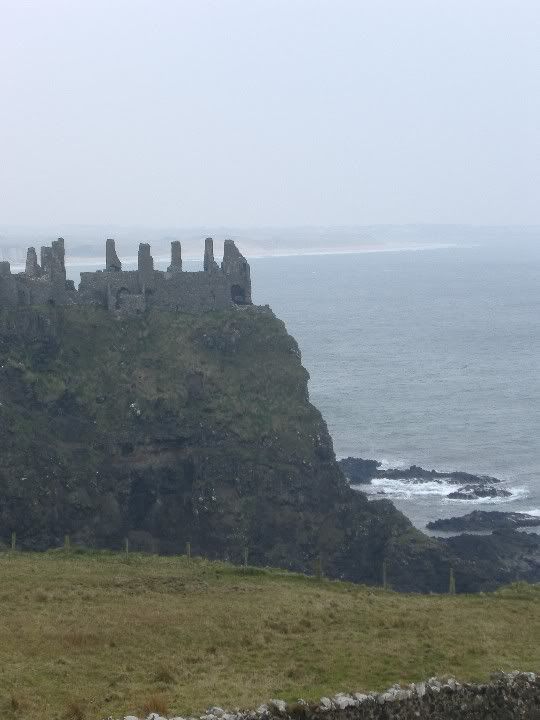Dunluce Castle Antrim Coast, Northern Ireland

This was our first view of Dunluce Castle. This site has been a stronghold for many centuries.
The limestone cliffs of the White Rocks ends abruptly against a dark basalt outcrop which is majestically crowned by Dunluce Castle and joined to the mainland by an arched walkway - underneath lies the ' Mermaid's Cave'. It is believed that the castle was built or (possibly) rebuilt by Richard de Burgh or one of his chief followers during the Anglo Norman period in Ireland, the site certainly was occupied as a fort before this time - a souterrain exists on the outcrop under one of the towers. The castle which has seen many additions to its original structure over the centuries gradually fell into disuse from the late 1600s' when the last occupier, Randall MacDonnell the second Earl of Antrim moved to Ballymagarry House - in the mid 1700s the seat of the Earl's of Antrim moved to the present location of Glenarn Castle. A thriving merchant village that once surrounded the castle was destroyed by fire during 1641 when the castle was besieged by an Irish army - the outlines of some of the old walls can still be seen in the land to the west of the castle, close by is the ancient church ruins of St. Cuthbert's named after a Northumbrian monk and the (possible) burial site of sailors and noblemen from the Spanish Armada. The most colourful occupier of Dunluce Castle was Sorley Boy MacDonnell - a Scottish chieftain whose clan established their dominance along the north coast in the mid 1500s, he had many differences of opinion with Queen Elizabeth who sent Sir John Perrott here in 1584 to bring him to task - but Sorley evaded arrest. Dunluce Castle was fought over many times in its past and it is wrapped in myths and legends. On a clear day you can look over an expanse of ocean from here to Donegal and round to Islay, a view which has remained unchanged for centuries. It was within this view that the tragedy of the emigrant ship the 'Exmouth' took place in April, 1857, bound for Quebec, she spent almost three days in horrendous sea conditions before finally breaking up on rocks off Islay with the loss of 240 lives The history of this land is evident everywhere, if the rocks could tell their story. We would all be enraptured.
Ta,
Deb
1 Comments:
NIce photo! It is amasing to be in a place that has so much known history. It was like that in Scotland last year.
Post a Comment
<< Home